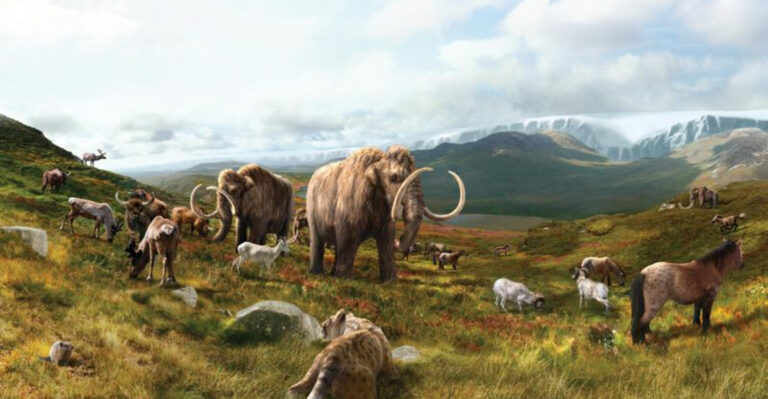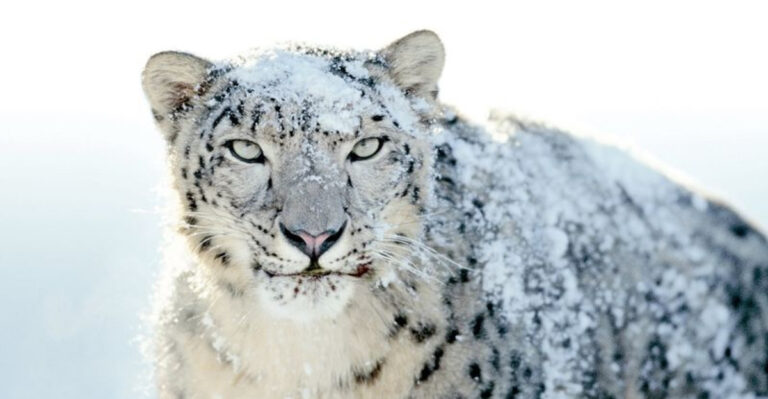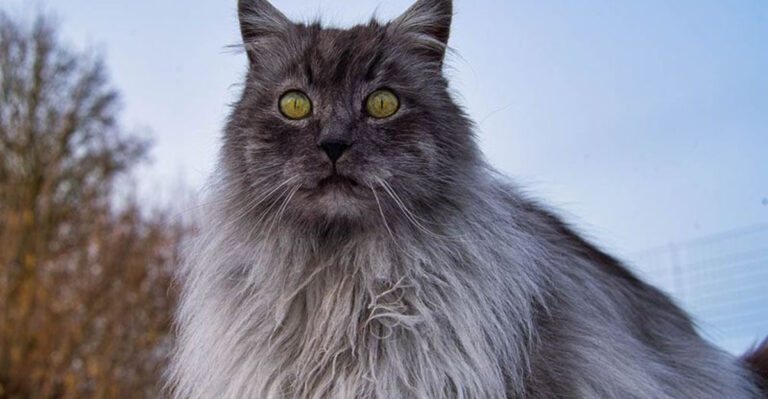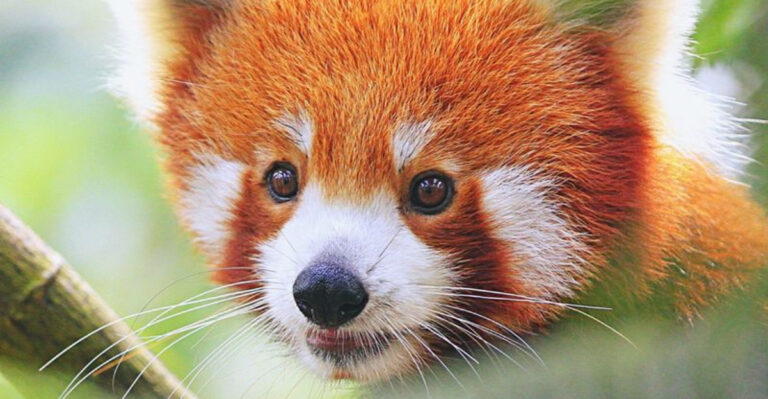17 Major Differences Between Donkeys And Horses
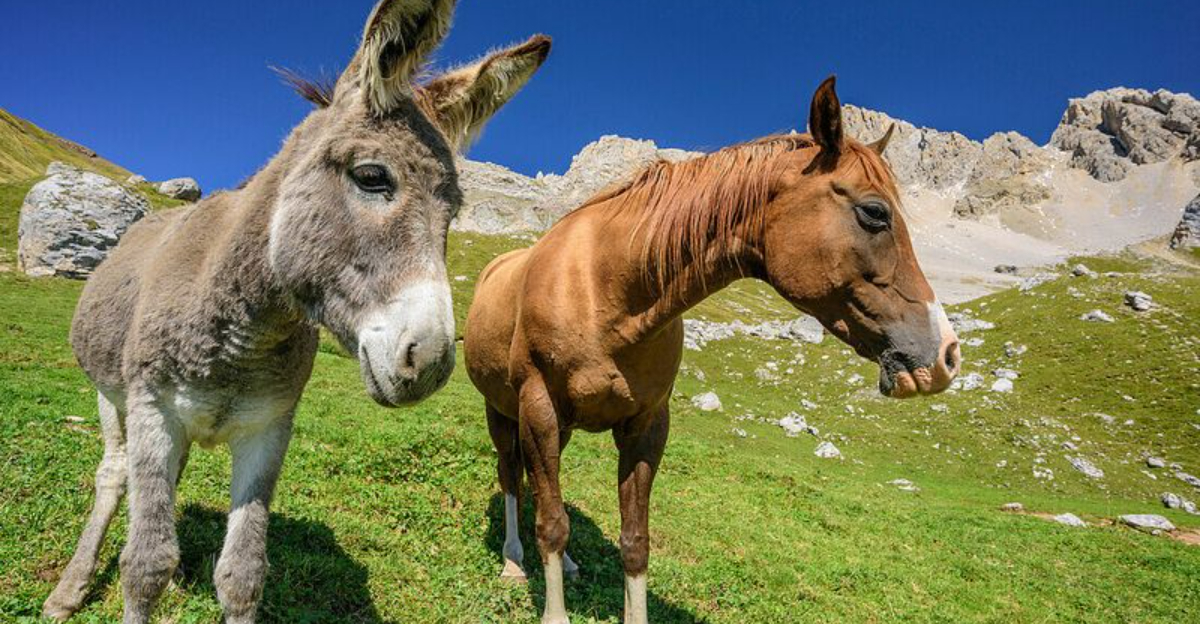
Ever wondered why donkeys and horses aren’t just the same animal with different names? Though they’re cousins in the equine family, these four-legged creatures have fascinating differences that go beyond their appearance.
Understanding these distinctions helps us appreciate how each animal has adapted to serve different purposes throughout human history.
1. Ear Length Matters
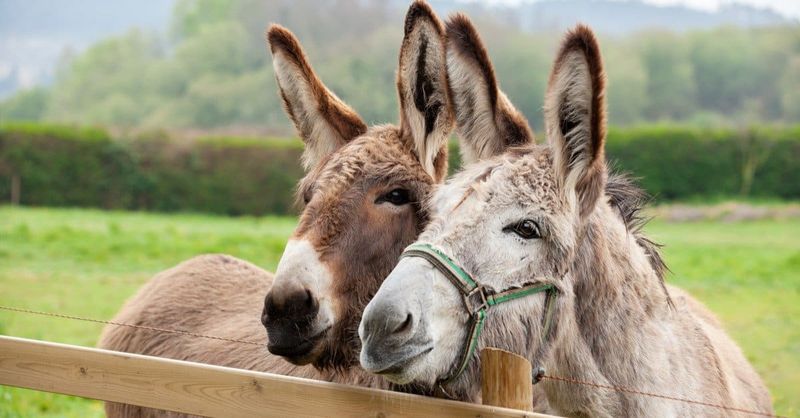
Those iconic long ears aren’t just for show! Donkeys sport significantly longer ears than horses, helping them detect predators from greater distances in their desert origins.
These supersized sound catchers also help regulate body temperature by dissipating heat – a clever evolutionary adaptation for harsh environments.
2. Sound Of Their Voice
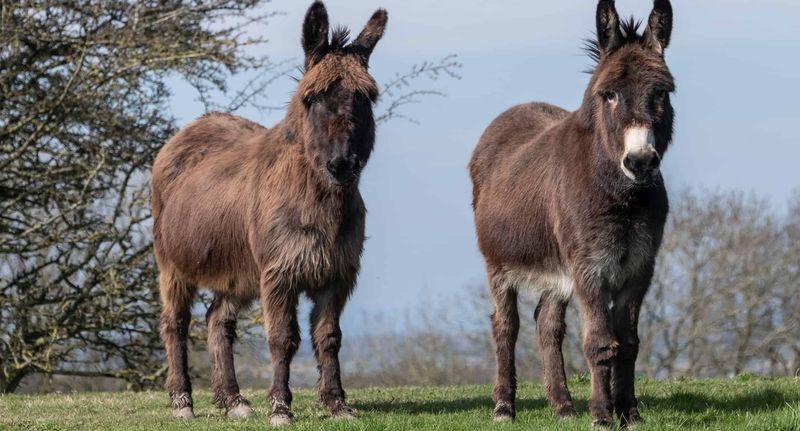
Forget the elegant neigh! Donkeys announce themselves with that unmistakable hee-haw bray that can carry for miles across desert landscapes.
This distinctive vocalization developed as a communication tool in their native arid habitats, where visibility is often limited but sound travels exceptionally well.
3. Tail Tale Differences
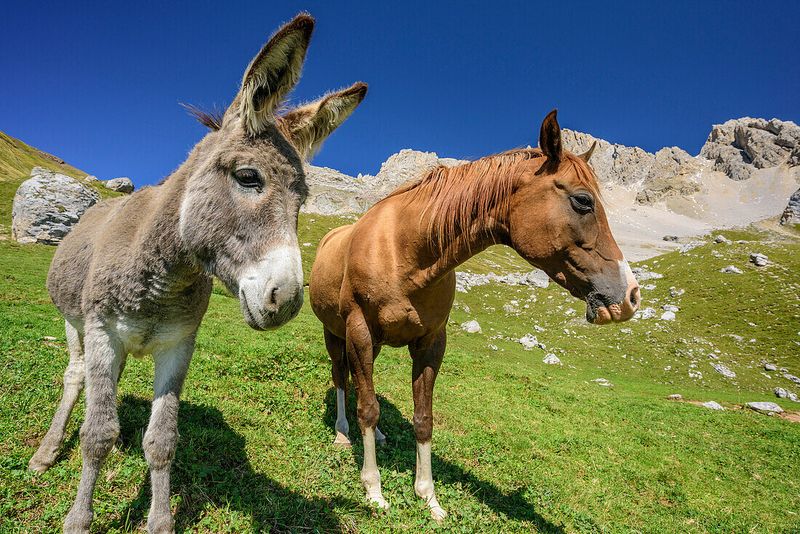
Swish, swish! A horse’s flowing tail resembles a luxurious curtain of hair, perfect for swatting flies across its entire body.
Donkeys, meanwhile, rock a more modest look with tufted tails that resemble a cow’s. This practical design suits their desert heritage where less hair means less maintenance and heat retention.
4. Size Surprise
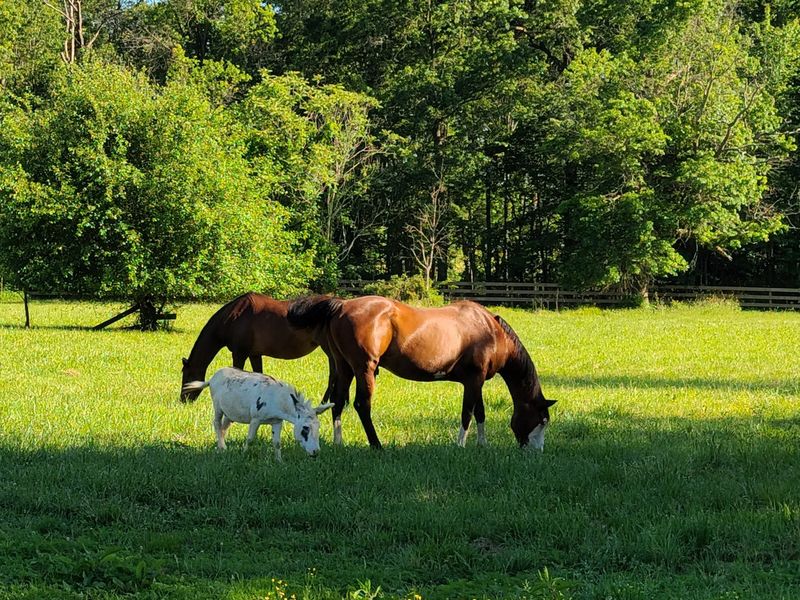
Standing tall in the paddock, horses typically tower over their donkey relatives by several hands (each hand equals 4 inches in equine measurement).
While most horses range from 14-17 hands high, donkeys usually measure between 9-14 hands, making them more compact and stockier in build.
5. Hoof Structure
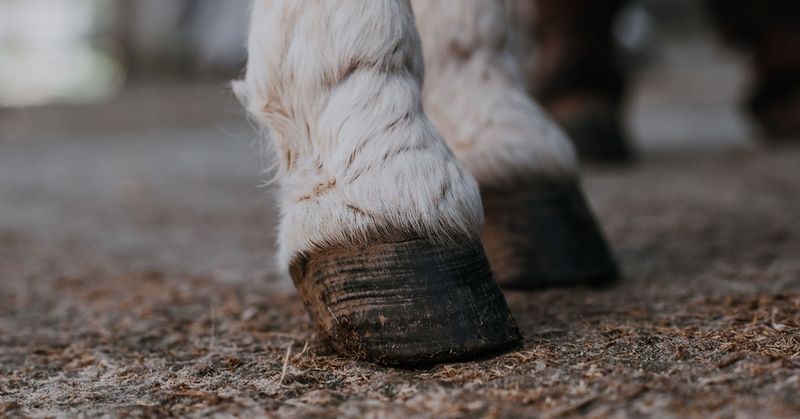
Tiny but mighty! Donkey hooves look like small cups compared to horses’ larger, rounder feet. Their unique shape allows donkeys to navigate rocky terrain with impressive stability.
The donkey’s hoof contains more elastic tissue and grows thicker walls, making them naturally tougher and less prone to common hoof problems that plague horses.
6. Survival Instincts
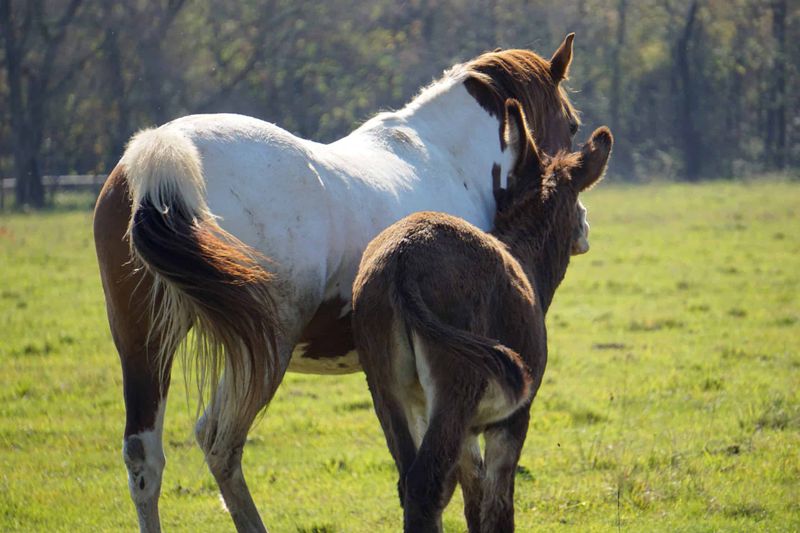
When danger strikes, horses bolt first and think later – their survival strategy is all about speed. Donkeys take the opposite approach, freezing to assess threats before deciding their next move.
This fundamental difference explains why horses are easier to spook while donkeys often get labeled as “stubborn” when they’re actually being cautious.
7. Mane Event
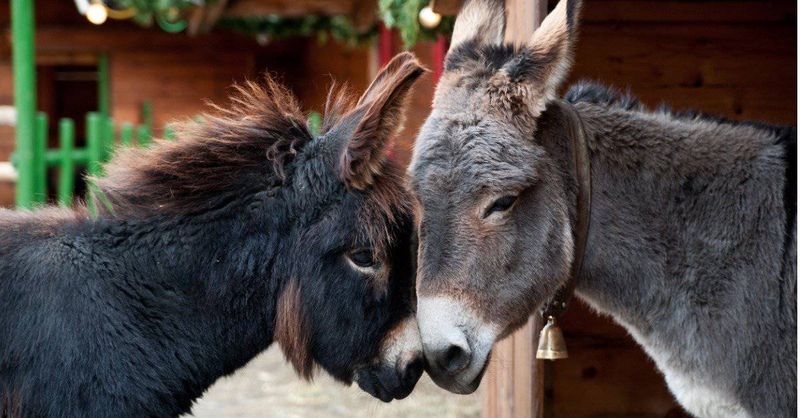
Long, flowing locks are a signature feature of horse manes, gracefully draping down one side of their necks. In contrast, donkey manes stand upright like a rugged mohawk, forming a short, stiff brush of hair.
Such a practical design not only requires minimal grooming but also offers a bit of sun protection for the neck. Each species showcases a mane style perfectly suited to its lifestyle and environment.
8. Digestive Efficiency
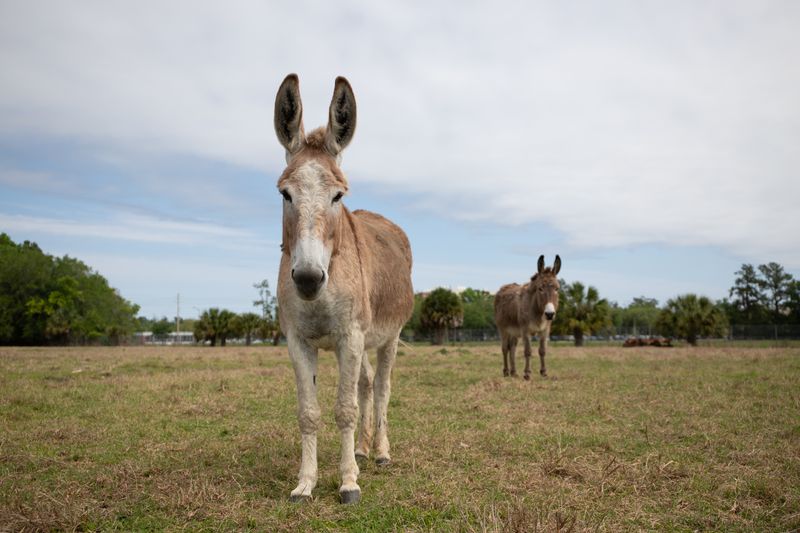
Talk about making the most of a meal! Donkeys can extract about 95% of nutrients from even the poorest-quality forage.
Their super-efficient digestive system outperforms horses by approximately 20%, allowing them to thrive in areas where horses would struggle to maintain weight. This remarkable adaptation helped them survive in desert regions with sparse vegetation.
9. Water Conservation Champions
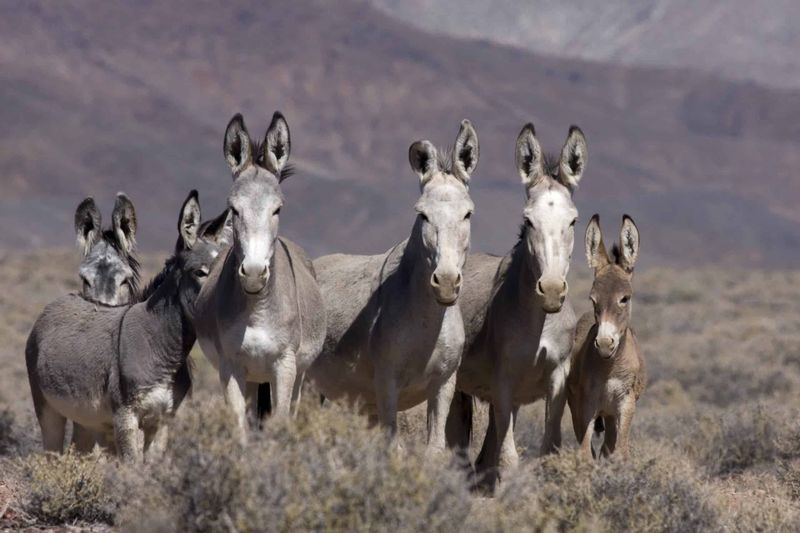
Known as masters of desert survival, donkeys can endure up to three days without water, a challenge that would leave most horses in serious distress. Specialized kidneys efficiently conserve moisture by concentrating urine, while minimal sweating further prevents dehydration.
Such remarkable adaptations trace back to their origins in arid regions where water was scarce and unpredictable. Evolution has fine-tuned donkeys to thrive where other animals might struggle.
10. Lifespan Longevity
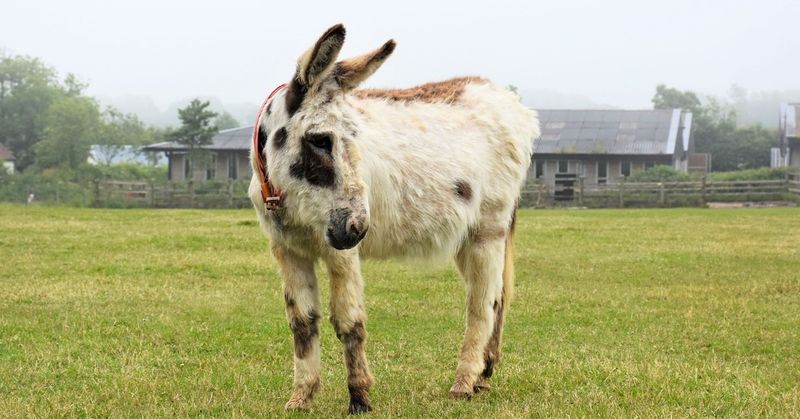
Gray whiskers tell a story of impressive endurance! Donkeys regularly live into their 40s, while most horses top out around 25-30 years.
This remarkable longevity difference means donkeys often outlive their equine cousins by a decade or more. Their hardiness and efficient metabolism contribute to their extended lifespan in proper care conditions.
11. Social Structure Styles
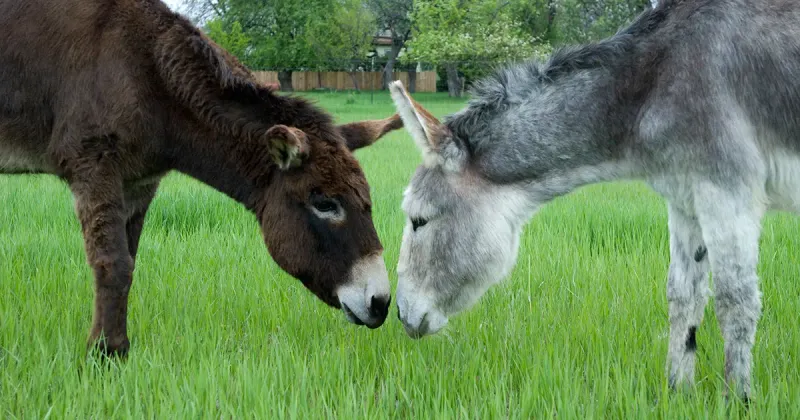
Friendship goals look different across species! Horses naturally form large herds with complex social hierarchies and constant interaction.
Donkeys prefer smaller groups or pairs, forming incredibly strong bonds with just one or two companions. When separated from their bonded friends, donkeys can actually experience depression and health issues.
12. Foot Speed Differences
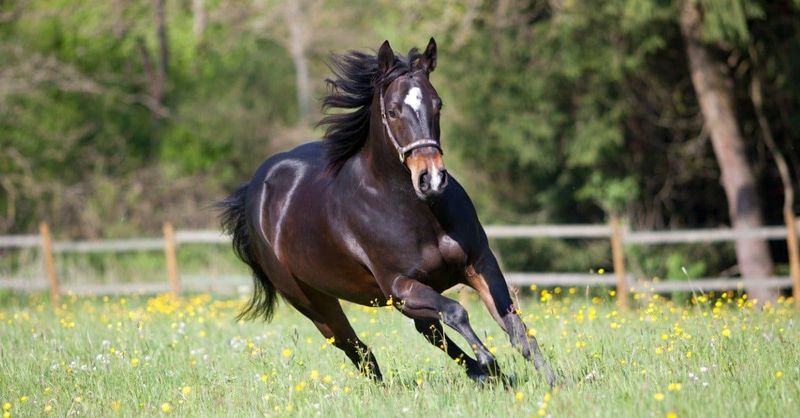
Need for speed? Horses take the checkered flag, reaching top speeds of 55 mph in short bursts, while donkeys max out around 15-20 mph.
This speed gap reflects their evolutionary paths – horses developed as prey animals needing quick escapes across open plains, while donkeys evolved navigating rocky terrain where sure-footedness trumped raw speed.
13. Memory Masters
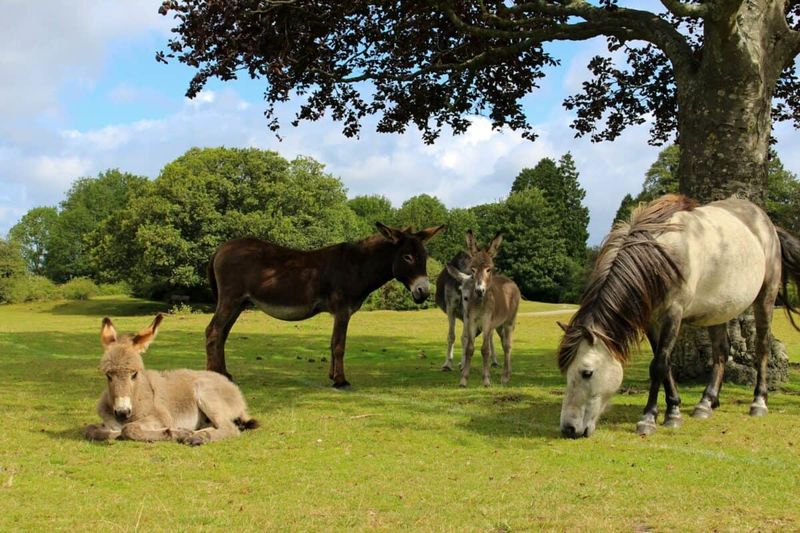
Elephant-like recall in a donkey’s brain! These long-eared wonders can remember complex routes and recognize individuals they haven’t seen for years.
Their exceptional memory outperforms horses, particularly regarding negative experiences. This explains why donkeys are harder to fool twice with the same trick and why they require more patient, consistent training approaches.
14. Facial Expression Range
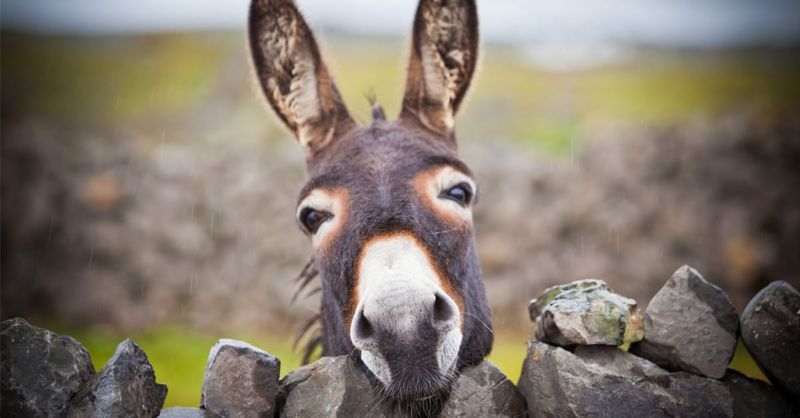
Reading equine emotions takes different skills depending on the species. Horses display about 17 distinct facial expressions that change rapidly with their mood.
Donkeys show fewer facial expressions and maintain a more stoic appearance. Their emotional cues appear more subtly in ear positioning and body tension, making them harder for novices to interpret.
15. Chromosome Count Curiosity
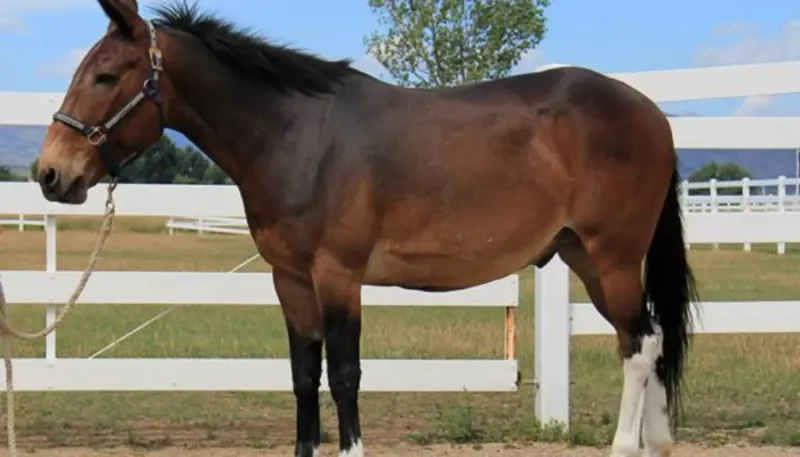
A genetic surprise hides in their cells! Horses have 64 chromosomes while donkeys have 62, creating that famous genetic mismatch that results in sterile mules.
This chromosome difference explains why these close relatives can produce offspring together, but those offspring can’t reproduce themselves. It’s a fascinating example of how small genetic differences create reproductive barriers.
16. Cold Weather Tolerance
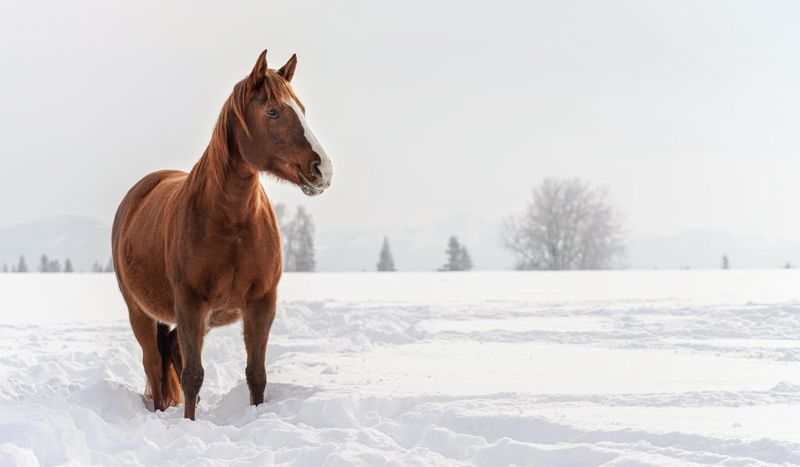
When winter arrives, horses and donkeys reveal their contrasting cold-weather tolerances. Horses typically fare better, thanks to thick winter coats and greater body mass, which helps retain heat.
Donkeys, on the other hand, struggle in wet, cold conditions due to their desert ancestry. Lacking naturally waterproof coats, they are more vulnerable to hypothermia without adequate shelter.
17. Guardian Instincts
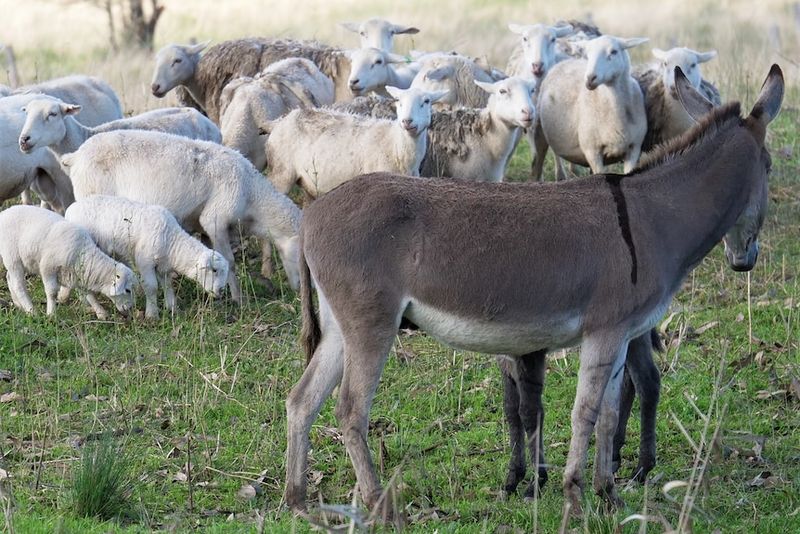
Surprising barnyard bodyguards! Donkeys possess natural guardian instincts that most horses lack, making them excellent protectors for sheep and goat herds.
When threats appear, donkeys will chase, stomp, and even bite predators like coyotes or foxes. This protective behavior has made them valuable livestock guardians in many farming communities worldwide.

